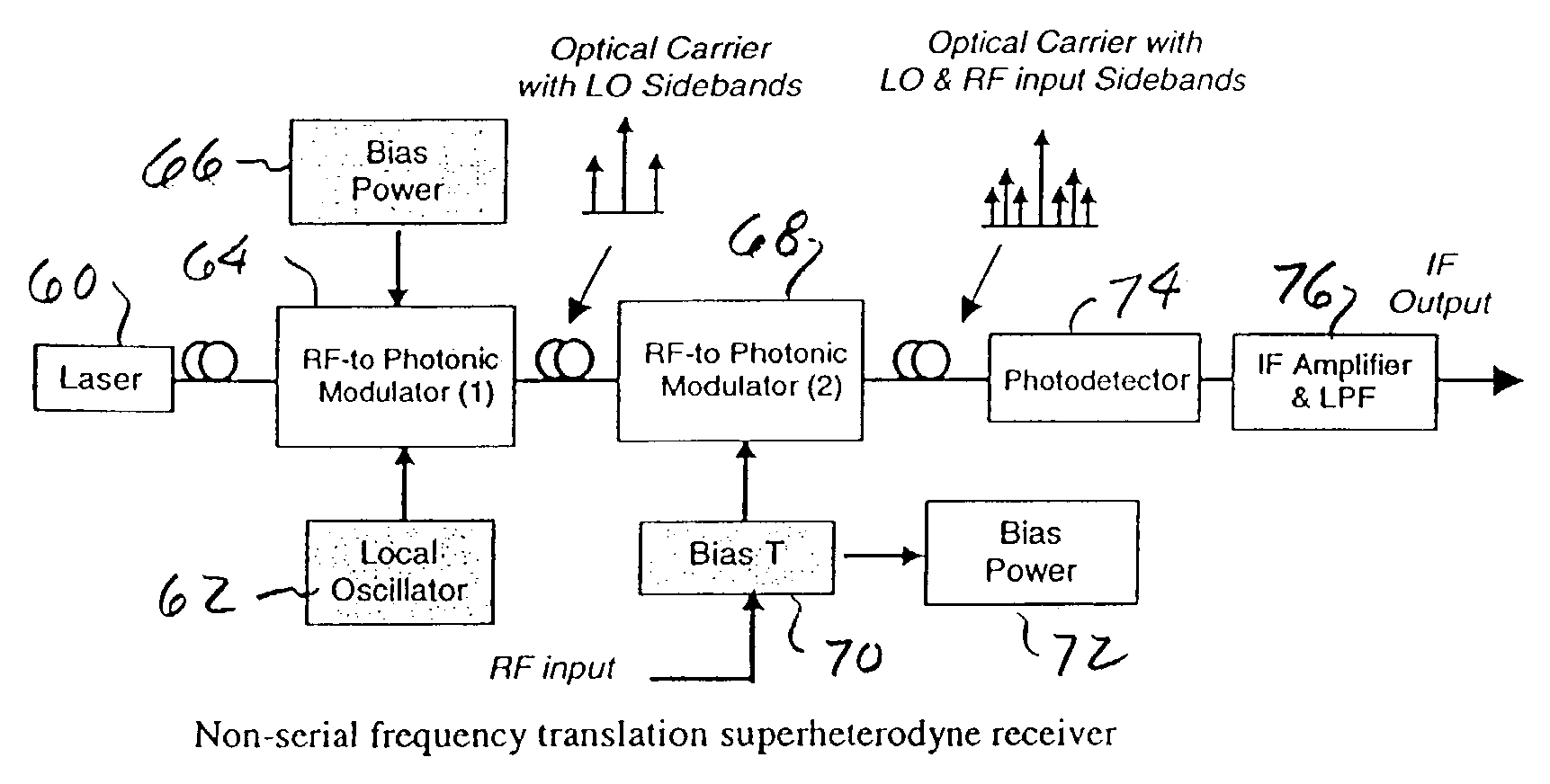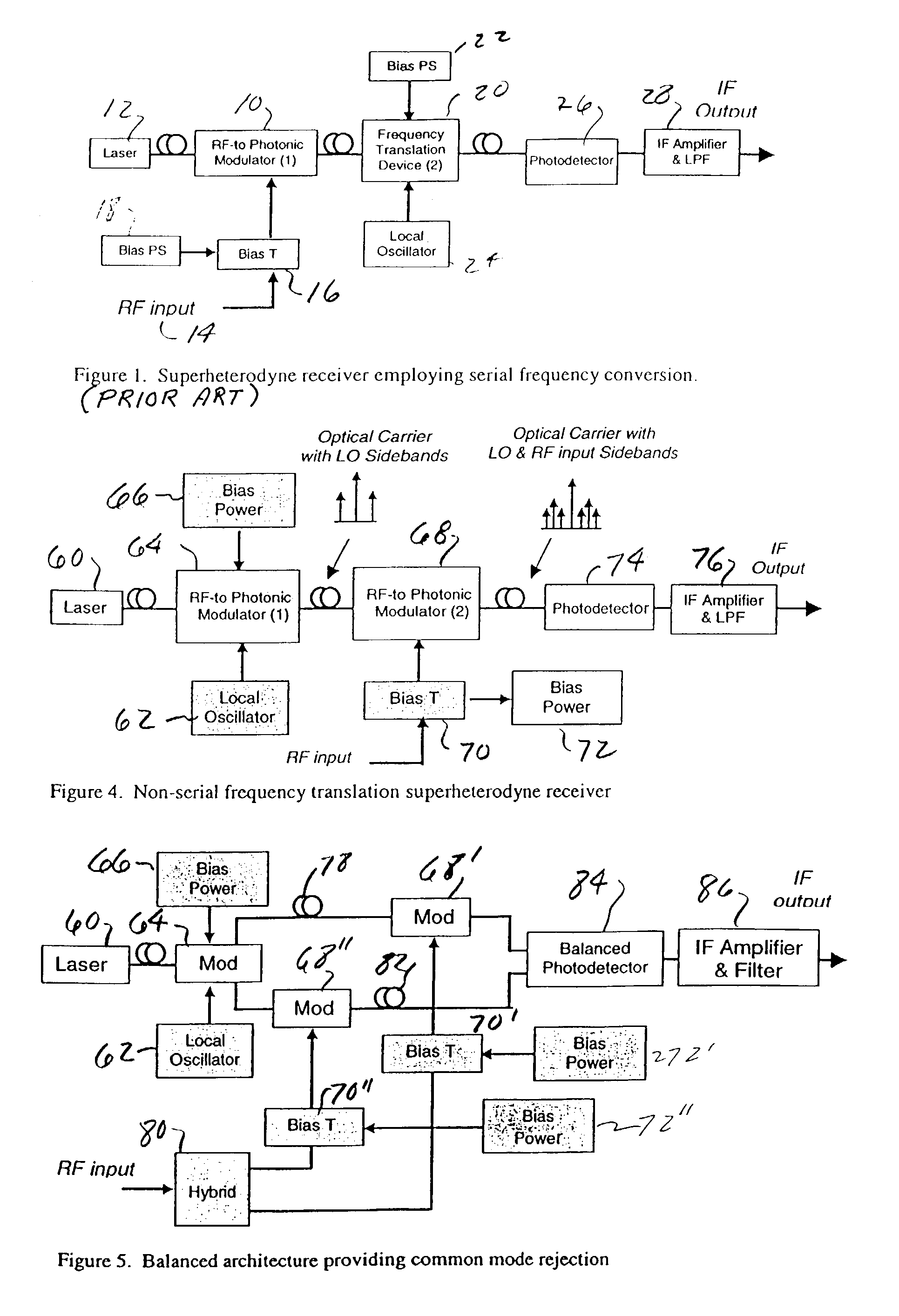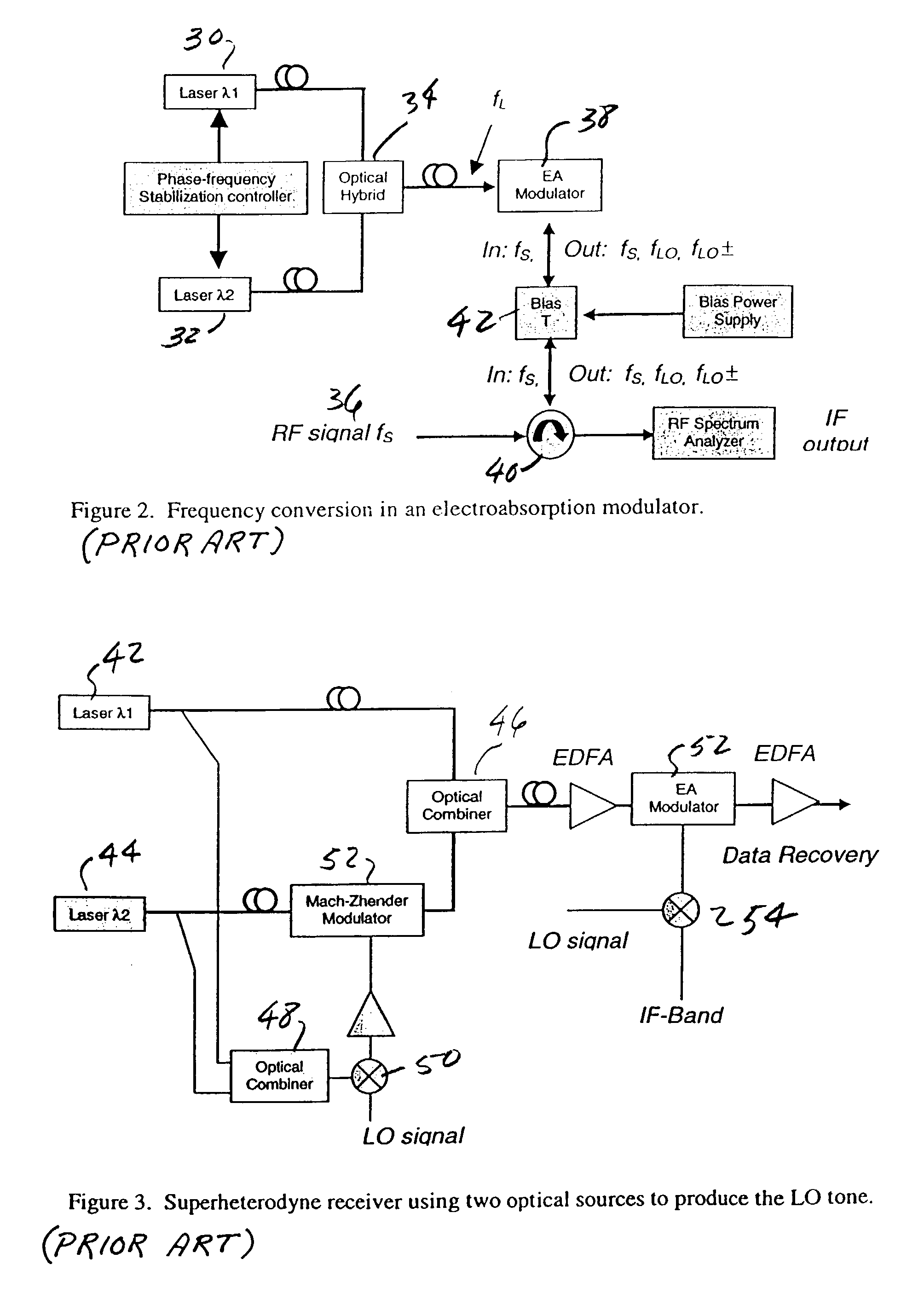Superheterodyne photonic receiver using non-serial frequency translation
a photonic receiver and superheterodyne technology, applied in the field of rf and microwave superheterodyne receivers, can solve the problems of limited dynamic range, increased noise figure, and excessive rf loss, and achieve the effect of eliminating frequency translation and reducing signal loss
- Summary
- Abstract
- Description
- Claims
- Application Information
AI Technical Summary
Benefits of technology
Problems solved by technology
Method used
Image
Examples
Embodiment Construction
[0020]FIG. 4 is a functional block diagram of a low-loss, high-dynamic range RF receiver in accordance with one embodiment of the invention. In this embodiment, light from laser 60 is modulated with a signal from local oscillator 62 in modulator 64 which is preferably an electroabsorption waveguide modulator as known in the prior art, supra. Bias power at 66 is applied to modulator 64 for biasing for optimum linearity and producing an optical carrier with LO sidebands as illustrated. This signal is applied to a second RF to photonic modulator 68, along with the RF input which is applied through bias transistors 70 which are biased by power supply 72. Modulator 68 can be biased for optimum rejection of in-band spurious products and generates as an output the optical carrier with LO and RF input sidebands as illustrated. The IF signal is then recovered by photodetector 74 and amplifier and low pass filter 76. Modulator 68 may be biased in a number of ways independent of the bias appli...
PUM
 Login to View More
Login to View More Abstract
Description
Claims
Application Information
 Login to View More
Login to View More - R&D
- Intellectual Property
- Life Sciences
- Materials
- Tech Scout
- Unparalleled Data Quality
- Higher Quality Content
- 60% Fewer Hallucinations
Browse by: Latest US Patents, China's latest patents, Technical Efficacy Thesaurus, Application Domain, Technology Topic, Popular Technical Reports.
© 2025 PatSnap. All rights reserved.Legal|Privacy policy|Modern Slavery Act Transparency Statement|Sitemap|About US| Contact US: help@patsnap.com



